Chris Grinter, on May 30th, 2010 For the rarely reoccurring quiz series, here is a new image. Who is this moth?
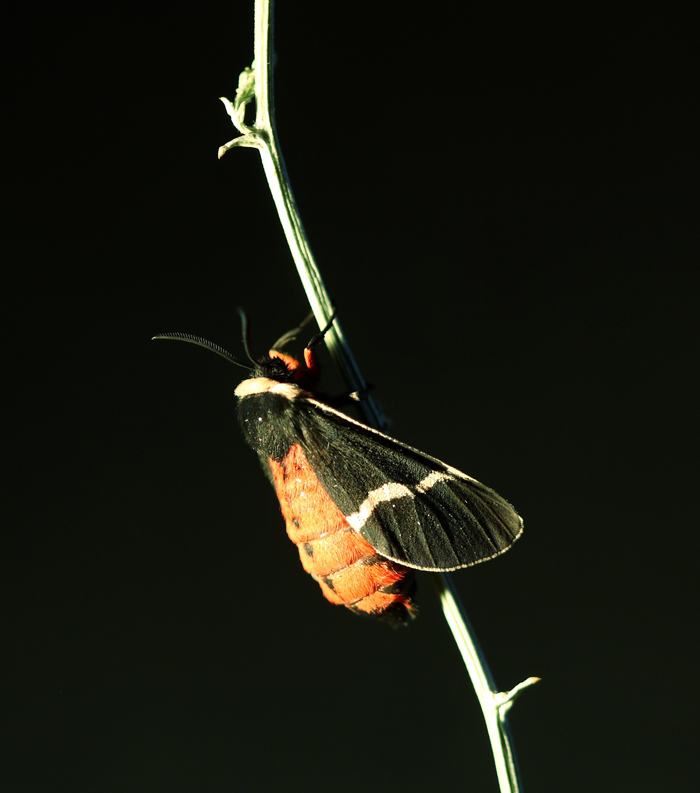
Chris Grinter, 25. mail, 2010 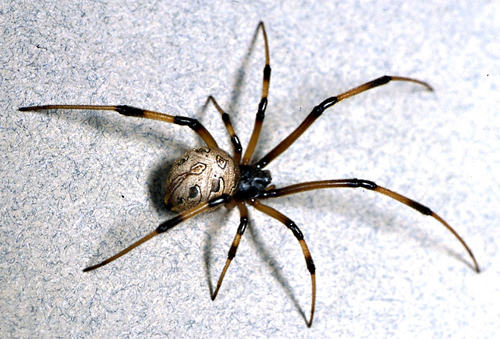
Neile Californians lugemine, eriti lõunas, silma peal hoida see ilus väike ämblik, Phycosoma geomeetrilise – pruun lesk. UC Riverside'i arahnoloogid jälgivad selle invasiivse liigi levikut. Irooniline selgub, et mitte olla sama ohtlik kui meie kohalik must lesk. Sellest hoolimata, see ei ole pärit nendest siinsetest osadest (tuleks öelda teie parimas lõunamaises twangis). Kui leiate isendi, eriti kui te ei asu LA/Orange/SD maakondades, sa peaksid kontakti UCR-i meeskond.
Chris Grinter, 25. mail, 2010 Koreaga teetering äärel kuum sõda, ökoloogilise katastroofi ennekuulmatu ja rahvarahutuste Jamaica (keegi harshed oma maheda) – ainult nimi mõne tänase pealkirju muudest allikatest – CNN võtab aega ebe esilehele.

Ma tavaliselt natuke põnevil, kui ma kohanud artiklid niimoodi sest mul on alati lootust midagi nii naeruväärne see tuleb arutada. Õnneks CNN juhivad meeskonnad purjus küünisahvidega kellele meeldib paiskama jama meid. Enne Skeptiline Moth epohhi tahaksin jagada linke esikaanele lugusid tulemused lumeinimene, Chupacabra ja välismaalaste paari sõbrad või levib see umbes facebook. Nüüd võin naeruvääristada CNN google arhiveeritud keskmise.
Ma lihtsalt ei saa aru selle artikli punktides. John Blake ei aruta seletus selle nähtuse, pakkuda arvamus, või esitada küsimusi. Muidugi, Ta küsib, kas Jumal tõesti hoolib, kes võidab, kuid see küsimus ei ole enam kehtiv, kui küsitakse, kas mu koer (ka väljamõeldud) hoolib millist autot ma sõidan (välja arvatud juhul, muidugi see on psüühiline! Tõsiselt…inimesed usuvad seda). Kui lugesin artikleid niimoodi ma tunnen nagu ma olen liigitamiseks paberid keskkooli inglise keele tunnis. Ei ole ajakirjandusliku terviklikkus, intelligentne arvamuse või faktiline alus Kirjoittelu – seal on lihtsalt ilus pilte ja sõnu illustreerides neid. Setting kogu palve ja usu küsimus kõrvale; sportlased on alati olnud tuntud oma ebausk (teine). The “tänukõnes” nähtus kahtlemata kuulub sellesse kategooriasse. Pärast edukaid statistiliselt väike tulemus (vaatama kuuma kätte), nad kardavad unustades Jumala kartuses võluväel kaotanud võime (mitte tingimata teadlikult). Mingil põhjusel Blake hoiab seda artiklit ainult sport – võib-olla ta on tahtlikult mängib massiivne demograafiliste ameerika sport armastav, bud valguse swilling, Kristlased – kuid selgelt on reoccurring teema. Igal auhinnatseremoonial Jumal, Jeesus või Allah on tavaliselt ülaosas aitäh nimekiri. Unusta kõik, et raske töö ja talent, mida oleks võinud, see oli midagi või keegi teine. Heites kõrvale kõik ratsionaalne mõte, et müstiline olend on ohtlik asi. See mõtteviis on sama, mis võimaldab sõltlased süüdistada kedagi peale iseenda (isegi kui sõltuvus on osaliselt juhtmega), usu usu tervendav, alustada püha sõda, või lase katoliku kirik süüdistada kurat.
CNN vilgub tuled ja jingling võtmed üle näod nende lugejad. Tavaliselt ma jätan ta kuni Fox News, et mind solvama, kuid mul on hea meel teada, et mul on valik turul.
Chris Grinter, on May 24th, 2010 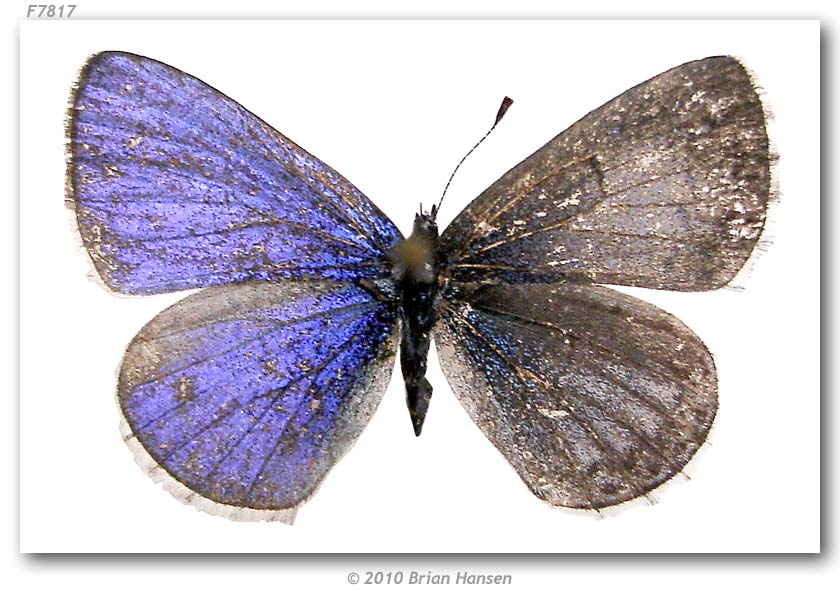
A once in a lifetime occurrence, a bilateral gynandromorph. Lühidalt, a glitch during cell differentiation creates asymmetrical chromosome patterns, which leads to asymmetrical sex expression in the adult insect. If you haven’t clicked the link above, do so, it’s an excellent description with some awesome photos.
Back to the butterfly. I was in the field this March just above the middle fork of the American River on the hunt for Xanthothrix, with me was Brian Hansen and Bob Patterson. Bob and I were on a mission, to locate a remote patch of Coreopsis high on serpentine soils, and to find our rare little moth. Brian came along to enjoy the day and explore the butterfly fauna. While Bob and I hiked ahead anxious to see if the days hike would be worth it, Brian stopped frequently to net passing leps. It was probably less than an hour out from the car when we hear form behind us on the trail “Hey guys… I think I just caught a gynandromorph!!!” Korras, I was skeptical. Bob and I approached to see Brian holding a little blue in his hand, which unmistakably, was a bilateral gynandromorph. I was blown away. Bob has over 50 years of experience as an avid lepidopterist and has never seen one of these in the wild. To make this feat even more impressive, this small blue butterfly is one of the commonest insects in the American west in the spring. Täna, they were puddling in great numbers along the trail, and I hadn’t even stopped to blink at one. Brian just netted a one in a million catch. Perhaps it is the curse of a jaded lepidopterist that will keep me from such once in a lifetime discovery; but I know I will be looking closer at even the commonest butterfly as it wings by me.
So as you can see the butterfly is exactly half male and half female (the right side is female). If you look very closely you can even see a perfect vertical line bisecting the body if the insect (looks like a photoshop edit almost), gynandromorphism after-all is expressed throughout the entire body and even the genitalia are contorted into strange shapes.
The specimen is in Brian Hansen’s personal collection, and you can find the images hosted on the Butterflies of America website.

Chris Grinter, on May 23rd, 2010 
Loomulikult, it was named Phallus drewsii. This comes form the list of the top 10 species named aastal 2009, complied by Arizona State University (not a very good list if 7 of my new species weren’t on there…). While I tend to avoid phallic and O’Keeffesque botany, this one I couldn’t resist because it was named after someone from my own institution. dr. Robert Drewes now has a small phallic fungi named after him (with permission). Taxonomy humor at work.
Chris Grinter, on May 18th, 2010 
Has just been posted over at Mardikad sisse Bush. Go over and explore the latest moth carnival, a gathering of blogs that have featured moths in one way or another over the last month or so.
Chris Grinter, on May 18th, 2010 News in from India, a butterfly photographer has been kidnapped. A local park official who was visiting the north eastern province Arunachal Pradesh was taken at night by a gang of armed youth-rebels. Efforts to find him have been hampered by the weather and remote terrain. India has recently become one of the most difficult countries to conduct research in, and now we are all reminded of its continuing history of violence. Often it is within the remote and wild portions of a developing country that harbors both stunning biodiversity and militant dissidents. While in Ecuador my group kept an eye out for Columbian FARC rebels who may have strayed across the border; thankfully it was only a minute possibility they would be there in the first place, and nothing was seen. I think some of my most harrowing field work has been along the US-Mexican boarder states and in Mexico itself. Drug runners would rather shoot you before asking you to move out of their way, and roaming banditos were responsible for a murder of a colleagues friend in Oaxaca years ago. Not surprisingly, the lure of untapped biodiversity keeps pulling us in. Stay safe in the field!
Chris Grinter, 5. mail, 2010 Üle pika nädalavahetuse Tulen läbi valdkonnas. Hoia uskumatu lugu (no hype siin…).
Kuigi ma olen eemal oleksid järgmised teistest suurepärane bloggers:
Continue reading Gone Collecting
Chris Grinter, 5. mail, 2010 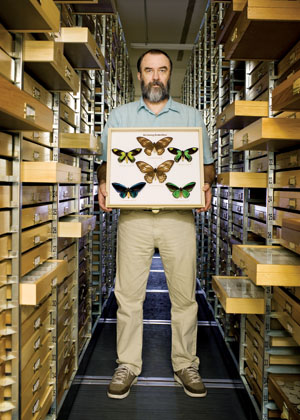 It’s good to throw a changeup every one in a while, and this week here is an article that is actually GOOD. Jah, you read it here first, a positive article about entomology collections. We all need a breather after that Fox news fiasco with the Michigan State collection. The Honolulu Magazine does a really great job (hey… I knew that title sounded familiar… it’s a book by Mai Berenbaum) and they actually seem to get it. There are some great quotes from Dr. Neal Evenhuis (pictured) and Shepherd Myers; go read about the Bishop Museum’s collections and the awesomeness of being an entomologist on one of the most beautiful places in the world. Tegelikult, Neal, need a curatorial assistant? It’s good to throw a changeup every one in a while, and this week here is an article that is actually GOOD. Jah, you read it here first, a positive article about entomology collections. We all need a breather after that Fox news fiasco with the Michigan State collection. The Honolulu Magazine does a really great job (hey… I knew that title sounded familiar… it’s a book by Mai Berenbaum) and they actually seem to get it. There are some great quotes from Dr. Neal Evenhuis (pictured) and Shepherd Myers; go read about the Bishop Museum’s collections and the awesomeness of being an entomologist on one of the most beautiful places in the world. Tegelikult, Neal, need a curatorial assistant?
Chris Grinter, 4. mail, 2010
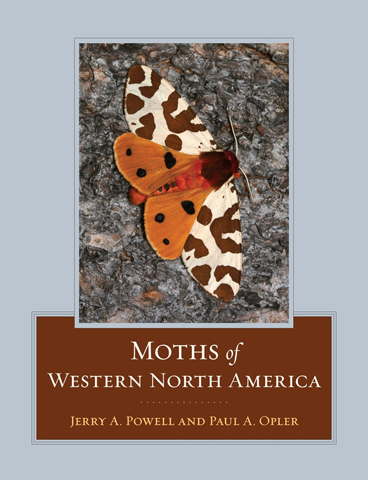
For those who are not aware, a new book hit the market at the end of last year. “The Moths of Western North America“, Powell and Opler. At only $95 it’s worth every cent (või $75 for the e-book, but I hate e-books). It’s a remarkable tome and the first of its kind for the western states. Not only is it a spectacular reference, but it sets the bar for all insect books. Ei, not every moth in the west is in there (that would break my desk and wallet at over 6,000 liigid), but almost one of every genus and common or remarkable species has a photograph, life history and distribution. Most importantly it covers microlepidoptera. I grew up on the eastern counterpart, Moths of Eastern North America by Covell. I had two copies, one for the field and one for my desk – and had to replace the field copy at least once. It was a great book, but Powell and Opler have run laps around it.
The other good news is you can now access all 1,228 moth illustrations and corresponding data online for tasuta. Go to CalPhotos and search for Powell, või click here. The nice part about this is the somewhat smaller microlep photos in the book are available in high-resolution for better identification. Beautiful addition to the reference and easier than sending everyone a CD.
|
Skeptitsism
|









